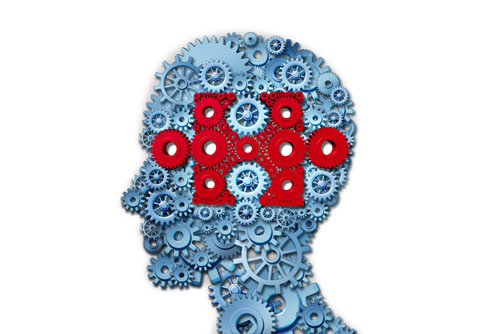
The largest ever exome sequencing study on autism spectrum disorder (ASD) was recently published in Cell, and it has revealed more than 100 genes are implicated in the disorder. This information is the first step in better understanding the neurobiology behind the phenotype and developing treatments for this disorder.
Dr. Joseph Buxbaum, director of Seaver Autism Center in New York, told Clinical OMICs that while there is “very, very well established data that shows autism is largely genetic—at least 80% of the risk is genetic,” this study will help determine which genes are actually involved.
“There’s a direct relationship between gene discovery, understanding biology and ultimate treatment. And so [this study] gives us a strong handle on not only understanding what’s changing in autism on a molecular and cellular level, but it’s also how we’re going to find new drugs.”
Working with a sample size of 11,986 ASD patients, and using an enhanced analytical framework to integrate de novo (developmental) and case-control rare variation (mutations in the individual), the researchers were able to identify 102 risk genes. Of these genes, 49 show higher frequencies of disruptive de novo variants in individuals ascertained to have severe neuro- developmental delay, and 53 of these genes showed up in higher frequencies in individuals ascertained to have ASD. This difference could account for the great phenotypical variety seen in individuals with ASD.
In addition to identifying subsets of the 102 ASD-associated genes that have disruptive de novo variants more often in people with developmental delays or those with ASD, the researchers showed that ASD genes impact brain development or function and that both types of disruptions can result in autism. They also found that both major classes of nerve cells—excitatory neurons, which trigger a positive and activating change in the downstream neuronal membrane upon firing, and inhibitory neurons, which trigger a negative change upon firing—can be affected in autism.
An international team of researchers were responsible for collecting the data from this study. They were located in more than 50 sites, and analyzed more than 35,000 participant samples. The larger samples size of this study enabled the research team to increase the number of genes associated with ASD from 65 in 2015 to 102 today.
“This is a landmark study, both for its size and for the large international collaborative effort it required. With these identified genes we can begin to understand what brain changes underlie ASD and begin to consider novel treatment approaches,” Dr. Buxbaum continued.
“One person doesn’t have all 102 mutations. They might have one of them, or two of them. And so that person with a mutation in Gene A might respond very, very well to a specific treatment, while somebody with a mutation at Gene C may respond better to a different treatment,”
“We expect that we found about 20% of the genes that could be found [in ASD]. We hope that those 102 genes fall into not 102 distinct pathways, but 10 pathways, so [researchers would only have to] think about developing 10 different kinds of approaches for autism rather than 100 plus.”
Dr. Buxbaum explained that he hopes that by mapping out the biological pathways involved, in the near future precision medicine could be developed to treat ASD. He envisions a future where drugs are personalized for each ASD patient’s specific genotype, in the same way precision medicine is being used now to treat specific mutations in cancer patients.
He added it was important to recognize ASD is a spectrum. “People sometimes conflate very, very mild, what we used to call Asperger’s, with severe autism, and then [we] get this question, ‘Why do you want to treat them? Why do you want to make a special drug just for them?’ And the answer is, we probably don’t.” He said that while individuals with mild forms of ASD can greatly benefit from therapy and learning social ques, individuals with more severe forms of the disorder – for example, if they are nonverbal, have a very low IQ, and suffering from severe and uncontrollable epilepsy – those individuals would benefit from intervention.
While the funding ASD received is on a much smaller scale then cancer research, the Autism Sequencing Consortium (ASC) has been able to provide unique support, particularly obtaining such a large sample, based on its setup. This international group of scientists share ASD samples and data. “We were very fortunate [in 2010] to get some philanthropic support from the Seaver Foundation. And they supported bringing everybody – all the big players in the field – together and meeting in New York City and talking about can we do this unusual study where people are going to ask be asked to share data and samples, prospectively.
Usually, historically, you had some samples, you study them, and you wrote a small paper, and then after that you share the data or the samples. We were asking for something pretty radical at the time, which was, ‘You can write your own paper, nobody’s going to stop you. But let’s not wait for that to happen before we put our things together, because it’s already quite clear that there are too many genes and you’re not going find much in a small sample.’ And so that’s how ASC was created and, nowadays, that’s kind of the norm.”











